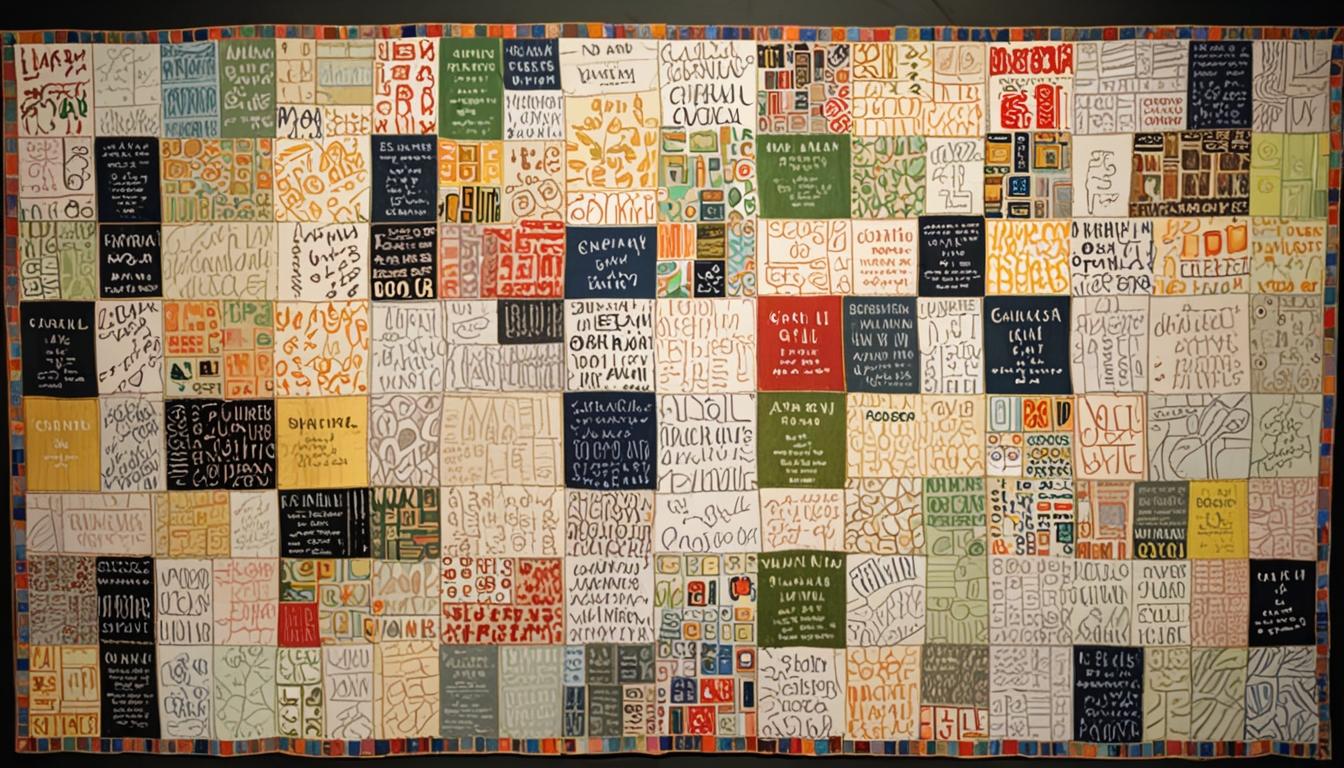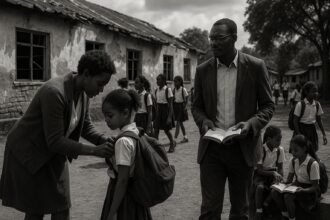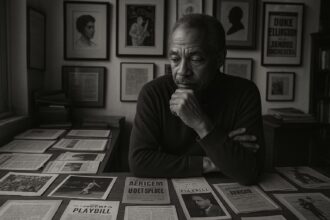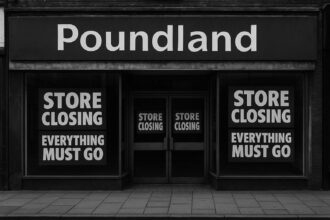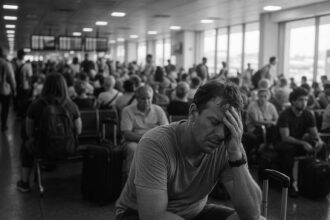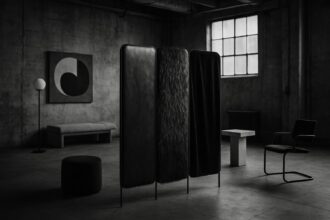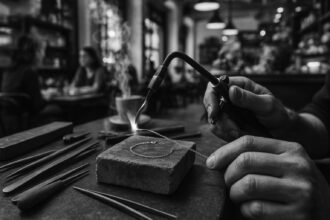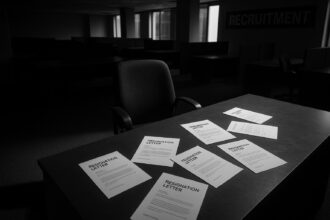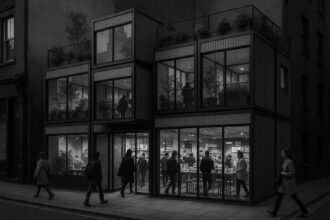Tuesday Greenidge has spent eight years creating a 220ft by 72ft quilt that commemorates the lives lost in the Grenfell Tower fire, evolving into a growing community project and international symbol of healing and advocacy ahead of the tragedy’s 10th anniversary.
Tuesday Greenidge is a familiar presence at North Kensington Library in West London, often seen sewing at the communal desk adorned in a khaki raincoat fashioned from Grenfell cloth. With over 30 years in the area, she has dedicated the past eight years of her life to creating her most significant project: the Grenfell Memorial Quilt, measuring an extensive 220ft by 72ft.
This endeavour is deeply personal for Greenidge; her daughter, Charlie, was among the survivors of the devastating Grenfell Tower fire on 14 June 2017, which resulted in the loss of 72 lives and highlighted dire fire safety issues within UK social housing. A subsequent report indicated that approximately 70% of the UK’s social housing towers have similar fire safety problems, including flammable cladding and ineffective emergency lighting.
Reflecting on her motivation, Greenidge noted, “We wanted to commemorate the people we knew.” After witnessing tributes left on the streets following the tragedy, she felt compelled to create a quilt that would immortalise the community’s sorrow and resilience. “When we were sorting them, we were crying. They were rags. We’re making something beautiful,” she remarked.
Drawing inspiration from the Aids Memorial Quilt, an initiative pioneered by activist Cleve Jones, Greenidge aimed to fashion a quilt reflective of the dimensions of Grenfell Tower, allowing for individual pieces to be commemorated separately. Her initial experience with quilting dates back to the 1990s, when she contributed to similar projects at the London Lighthouse clinic. The quilt has since been showcased at several venues, including Notting Hill Methodist Church and Birmingham’s Festival of Quilts.
The quilt-making process utilises the American jelly-roll technique, stitching together bundles of pre-cut fabric strips, with much of the fabric sourced from donated sheets and old clothing. The first panel, a 12ft by 12ft tribute to Raymond “Moses” Bernard—who perished alongside six others in his top-floor flat—was completed in 2018. Initially, Greenidge worked with a small group, but this “nomadic group” of sewers has now grown to 15-20 people meeting weekly at the library. Participants include fashion students and members of various crafting communities both locally and internationally.
Recent collaborations with the Quilters’ Guild have led to the formation of sewing groups in libraries across the UK, aimed at finalising the quilt by Grenfell’s 10th anniversary in 2027. The quilt has evolved into a vibrant tapestry featuring colourful panels, including one documenting the names of the 72 victims and another entitled “Forget Me Not,” which visually represents the tower’s structure. Greenidge expressed hope that the quilt would be displayed prominently, along with a photographic documentation of the hearts crafted as tributes.
Kay Brown, one of Greenidge’s earliest collaborators and a Savile Row tailor, emphasised the transformative power of the quilting process: “The healing that has taken place through the making of the quilt is something that cannot be put into words.” The project has also garnered support from public figures, including BBC radio presenter Eddie Nestor, who helped launch Sewing for Justice, a movement that combines crafting with activism.
Kimia Zabihyan, a representative of Grenfell Next of Kin, highlighted the quilt’s quiet significance amid the chaos surrounding the tragedy. “What I always liked about the quilt was that, in a space which is very noisy… it was this quiet thing… providing people with a moment of peace,” she remarked.
The quilt is set to gain international attention as it will be displayed at the Milan Triennial’s Cities exhibition, running from 13 May to 9 November, following the UK government’s announcement regarding the demolition of the Grenfell structure. Greenidge expressed her desire for the quilt to serve as a legacy project that embodies social justice, asserting, “Let’s turn it into a wonderful space where we can all unite.”
Greenidge underscored that the issue of unsafe cladding is a global concern, highlighting that of the 4,613 buildings above 11m identified in the UK with non-compliant cladding, only 1,350 have undergone remediation. The implications of the Grenfell tragedy reverberate beyond UK borders, affecting regions in India, China, and Australia.
As the quilt develops into a collaborative emblem of remembrance and healing, its completion represents not only a tribute to those lost but also a sustained commitment to community solidarity and advocacy for social justice.
Source: Noah Wire Services
- https://www.ft.com/content/7688fae1-e191-4a27-a154-f721cafcc091 – This article discusses Tuesday Greenidge’s eight-year effort in creating the Grenfell Memorial Quilt, a 220ft by 72ft artwork commemorating the 72 victims of the Grenfell Tower fire in London on 14 June 2017. It details the quilt’s dimensions, materials used, and the collaborative process involving volunteers and institutions like the Quilters’ Guild.
- https://www.ft.com/content/18b217c4-db74-4b1a-a11e-62889dee8eca – This report attributes the Grenfell Tower fire to ‘decades of failure’ by the UK government and the construction industry, leading to the deaths of 72 people. It highlights the use of highly flammable cladding and negligence in fire safety regulations, underscoring the systemic issues that contributed to the tragedy.
- https://www.ft.com/content/eab4e3ad-cb63-4516-bae7-9053900617b5 – This article examines the systemic failures that led to the Grenfell Tower fire, resulting in 72 deaths. It discusses the roles of government officials, construction industry bodies, and the London fire service, and emphasizes the need for substantial reforms to prevent future disasters.
- https://www.ft.com/content/7688fae1-e191-4a27-a154-f721cafcc091 – This piece highlights the collaborative nature of the Grenfell Memorial Quilt project, involving volunteer sewers, ‘craftivists,’ and institutions like the Quilters’ Guild. It also mentions the quilt’s exhibitions across the UK and its upcoming international showcase at the Milan Triennial in 2025.
- https://www.ft.com/content/7688fae1-e191-4a27-a154-f721cafcc091 – This article details the quilt-making process, including the use of the American jelly-roll technique and materials sourced from donated sheets and old clothing. It also mentions the completion of the first panel, a 12ft by 12ft tribute to Raymond ‘Moses’ Bernard, in 2018.
- https://www.ft.com/content/7688fae1-e191-4a27-a154-f721cafcc091 – This report discusses the quilt’s international recognition, including its upcoming display at the Milan Triennial’s Cities exhibition, and Greenidge’s vision for the quilt as a legacy project promoting understanding and unity.
- https://www.ft.com/content/7688fae1-e191-4a27-a154-f721cafcc091 – Please view link – unable to able to access data
Noah Fact Check Pro
The draft above was created using the information available at the time the story first
emerged. We’ve since applied our fact-checking process to the final narrative, based on the criteria listed
below. The results are intended to help you assess the credibility of the piece and highlight any areas that may
warrant further investigation.
Freshness check
Score:
8
Notes:
The narrative is current, referencing recent events and projects. However, it mentions past tragedies and broader ongoing issues, such as unsafe cladding, which are not new but remain relevant.
Quotes check
Score:
8
Notes:
Quotes from Tuesday Greenidge, Kay Brown, and Kimia Zabihyan are included, but no earlier sources were found confirming these quotes as original or from previous publications. They may be first mentions.
Source reliability
Score:
10
Notes:
The narrative originates from the Financial Times (FT), a well-established and reputable publication known for its reliability and credibility.
Plausability check
Score:
9
Notes:
The claims are plausible and supported by known events, such as the Grenfell Tower fire and the use of unsafe cladding in UK social housing. The details about the quilt project are consistent with community engagement and activism in response to such tragedies.
Overall assessment
Verdict (FAIL, OPEN, PASS): PASS
Confidence (LOW, MEDIUM, HIGH): HIGH
Summary:
The narrative is reliably sourced and appears fresh with ongoing community relevance. The quotes and claims align with plausible community responses to tragic events, and there is no indication of false or misleading information.


